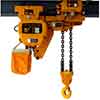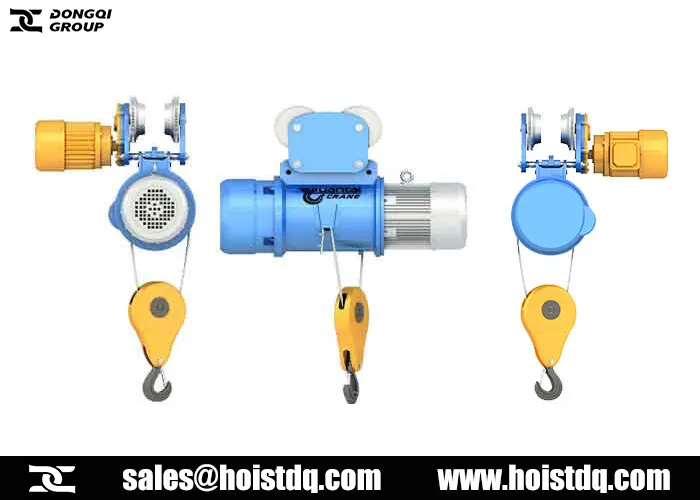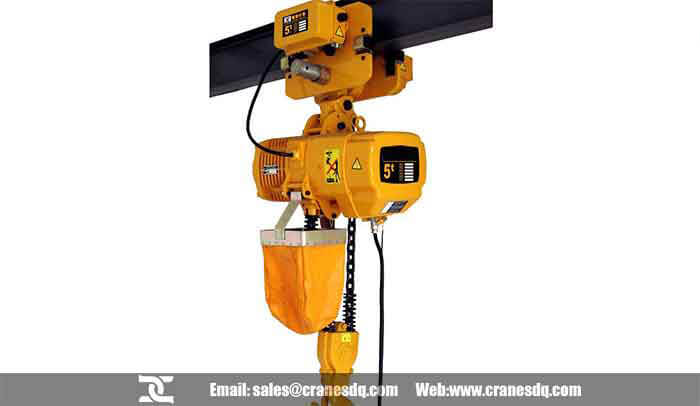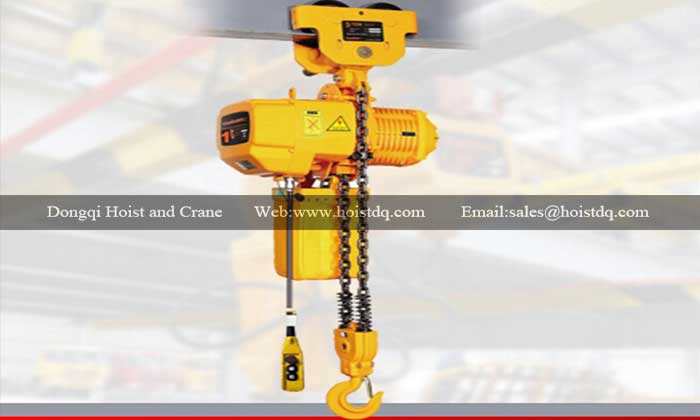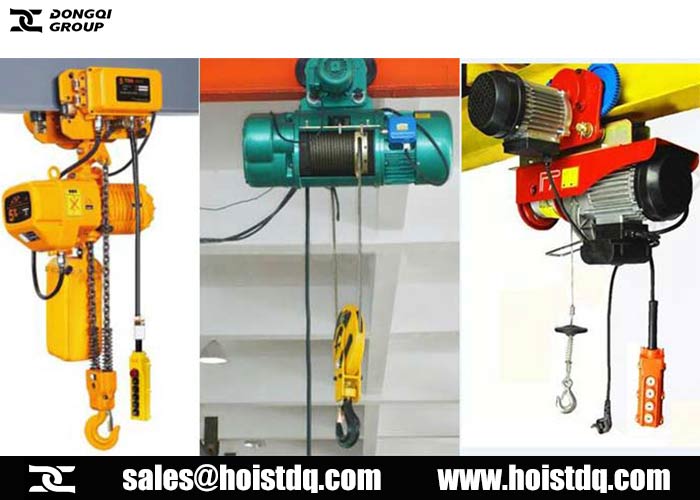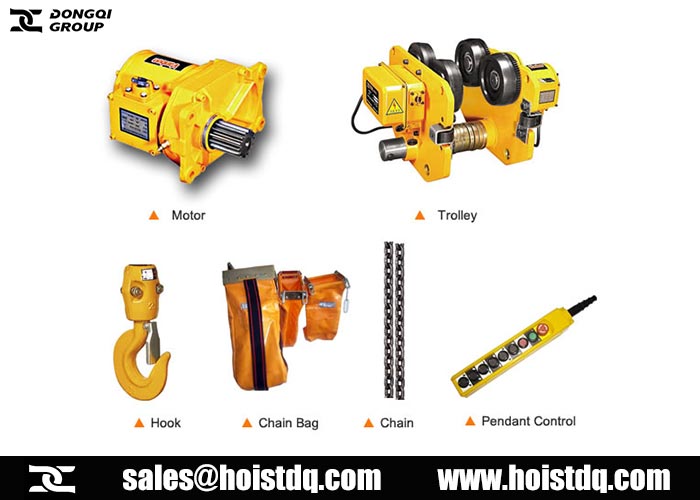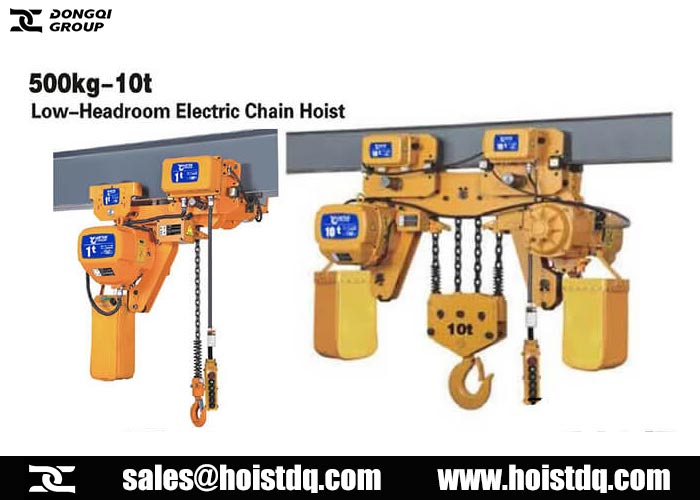Chain hoist
Chain hoist overview
A chain hoist is a mechanical device used for lifting heavy loads of objects and equipment. It is made with a pulley, which is held together by a closed chain. The closed chain forms a loop, which makes it easy to be pulled by hand.
There are several large and small pulleys located throughout a chain hoist. There is one large and one small pulley are situated on the same axle, as well as a also a mobile pulley that holds the load in place.
For the load to be raised with the chain hoist, the closed chain has to be pulled. When it is pulled, the large pulley draws in more chain than what is released by the smaller side. From here, the lifting process begins.
Although the history of pulleys is unclear, it is known that primitive methods were employed to move heavy objects around. One of the early attempts at a pulley system was the single fixed pulley, which failed because friction prevented the wheel from being turned. Rope pulleys, which were commonly used for pulling water out of wells and are still in use today, are thought to have been invented next.
Archimedes, a Greek inventor of the early 3rd century BCE, has been credited for inventing a pulley designed to haul ships out of the sea. This was accomplished with a special block and tackle system which is still used today. Such early pulley inventions led to the development of the chain hoist.
Types of chain hoists
There are three types of chain hoists: air, manual, and electric. The manual one and the air one are designed with reduction gears, hook pivots, and swivels. Suspended by a top hook, or by a push or geared trolley, these devices move objects slowly and carefully while making height adjustments. The attached load is well secured so it can be left fixed without requiring a great deal of supervision.
The electric chain hoist, on the other hand, is generally used for lifting heavy-duty industrial loads. It allows the user to pull from the side as well as vertically.
How Chain Hoists Work
There are three types of chain hoist. Differential, Lever Ratchet and Hand chain.
From Rigging and Moving
The most important thing to remember is that heavy items have mass and mass equals energy. It may not be obvious but you know if you drop something heavy on your foot it will hurt. But it may do more than hurt. An anvil, swage block or milling vise dropped on one’s foot could break numerous bones, disable and cause considerable expense.
Differential Hoists
These use a continuous loop of chain and a double chain wheel at the top with different number of pockets on the two sides. The lower “hook” wheel has grooves to ride on the chain but no pockets. As the chain is pulled around the inner load loop gets smaller or larger by the difference in the number of pockets on the chain wheel (the differential). As the lifting loop gets shorter the hand loop gets longer and vise versa. This is a bit of an inconvenience but the mechanism is as simple as they get.
Lever Ratchet Hoists
These are small portable units with capacities up to 5 tons but the common ones are rated 1/2 or 1 ton. The ratchet handle operates simple gears that pull a short load chain. The load is supported by a disk type friction brake similar to an automotive clutch disk held by a paw and sprocket (ratchet). Lifting rotates the brake/clutch on the ratchet. Lowering releases the pressure on the brake via a multi-lead screw similar to a brake Bendix.
Hand Chain Hoists (standard chain hoists)
These operate like the ratchet hoists above except a chain wheel and loop of hand chain turns the gearing. A brake holds the load and a ratchet prevents the brake from rotating one direction. The chain wheel rides on a screw that loosens the brake when the chain is pulled in the lowering direction. Most have planetary gearing on the brake wheel. Chain hoists are made with straight pulls and compound pulls up to 10 tons or more. Chain hoist are made in steel, portable aluminium housings, spark proof materials and corrosion resistant materials.
Common Features and Problems
High quality chain hoists have ball thrust bearings in the hook to allow rotating the load.
Load hooks have openings parallel to the back. Properly rated load hooks that have been overloaded will spring open and not be parallel.
The brakes in industrial duty chain hoists are large and sufficient to support the load. A two ton chain hoist has an 8″ to 10″ diameter brake. Small import 2 ton chain hoists have small 3 to 4 inch brakes that are patently dangerous. They will slip under partial load without operation then due to heat rapidly slip more. These are dangerous junk that have no place in a safe shop.
Chain hoist Maintenance and Inspection
Chain hoists are durable and long lasting. The only regular maintenance is inspection, cleaning and lubricating. Chains should be kept clean and rust free. There are only a few bearing points that require oiling but these often require dismantling the chain hoist. Depending the use this should be done once a year or two. Since these devices have gears it is important to keep them sand and grit free. To clean the gears requires dismantling. Afterwards they should be greased with a tacky high pressure lube like Never Seize or gear grease.
Chain hoists that slip should be tagged “out of order” and repaired if possible. If not they should be scrapped. Chains that are worn, kinked or stretched should be replaced. Load chains have gently curved sides that when overloaded become straight and sometimes stiff to flex. Stretched, straightened chains should be scraped and replaced. Load chains on hoists that have been stretched will not run smoothly on their blocks. Snapping or popping chains are an indication of overloaded chains.
Safety Factors and Testing
Traditional European and North American load lifting equipment has always had significant safety factors. Most steel crane and chain hoist parts are rated to be loaded to a maximum of 10,000 PSI at 1.5 to 2 times the rated load. This allows almost all parts to be safely made of mild steel. But then the parts are often made of steels that have five to ten times the strength of mild steel thus having huge safety factors. These 15 to 20 to one safety factors are what allows load lifting equipment to snag or catch a dropping load and safely absorb the inertia of such over loading.
These safety factors should never be assumed or taken advantage of. The basic 1.5 rating is the amount of test load that is periodically put on industrial cranes to test them. Private owners and small shops should also periodically inspect and test their equipment to full or 1.5x capacity and record the test.
On our large 10 Ton crane a 30,000 pound test load was not often available but occasionally we would have large assemblies that we normally did not lift. We would take advantage of these occasions and carefully lift them a few inches, have folks in the shop witness the lift then carefully put the load down. One thing we would have to be wary of was that at test load conditions the crane bridge would deflect more than that 1/4″ or less and the trolley would try to roll to the center of the beam.
Hanging Hoists
Hoists can be hung statically using a loop of chain or shackle. Movable hoists are hung on a trolley. In either case the support method should be rated for the capacity of the hoist.
Trolleys should be hung on an appropriate beam. Crane or hoist beams are rated by deflection. Deflection should be 1/4″ or less at the middle of the beam when fully loaded. This rule does two things. At 1/4″ deflection trolleys do not roll down hill. At 1/4″ deflection the strain on most beams is well within a safe range.
Calculating deflection can be daunting if you do not know how. You start with the beam specification (type, size, weight per unit length). Then look up the section modulas and plug it into the equations. Engineering handbooks have some of the data, the AISC Steel Construction manual has data on almost all beams as well as deflection formulas. Some engineering programs have the information as well.
One thing to remember about deflection is that it increases by the cube of the increase in length. So the span of the beam makes a huge difference.
Hanging hoists from wood is difficult to rate. Hanging hoists from roof trusses can be rated roughly by the roof rating but is NOT included in codes and this is NOT an engineering recommendation. Use at your own risk!
Low load utility building roofs are rated as low as 10 to 20 pounds per square foot. Standard structures are usually rated 30 to 40 pounds per square foot. Only in high snow load areas are roofs rated 50 to 50 pounds or more. If you take the area supported by a pair of trusses, say 20 by 4 feet, this is 80 square feet. Multiply by 20 and you have 1600 pounds. This is the total load those trusses may be expected to support including wind and snow. Add a third truss and you have 2400 pounds, a forth and its 3200 pounds. Your hoisting load should never be more than 50% of the rated load.
If you are hanging a shop monorail from wooden trusses the lower joist should be doubled up for at least 50% of the span or more. Gluing, nailing and bolting is recommended. A wooden beam in the trusses above the crane rail can help spread the load and add strength to the whole. If you are hanging a short steel beam a longer wood beam will help spread the load across more trusses. A bridge truss perpendicular to the roof trusses will increase the roof strength as well as spread the load.
Hoisting equipment offering of Dongqi
Various types of hoists are provided by Dongqi Group, the following list will give you a general introduction of Dongqi Hoists. Please contact us to select the right Hoists and lifting equipment for you application.
| The electric chain hoists can be used to handle material with the lifting capacity of 0.5 ton to 35 ton, lifting height of 3 to50m, with the working class of M3 and M4. Hoistdq offers you various types of electric chain hoists to solve you material handling solutions. |
| DHS Series Electric Hoists, | TCH series Chain Electric Hoist | DHP series Chain Electric Hoists |
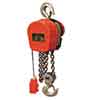 |
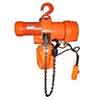 |
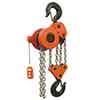 |
|
DHS Series Electric Hoists:1 ton, 2 ton, 3 ton, 5 ton,10 ton |
TCH series Chain Electric Hoist:1 ton, 2 ton, 3 ton, 5 ton,10 ton |
DHP series Chain Electric Hoists:1 ton, 2 ton, 3 ton, 5 ton,10 ton |
More information about Chain Electric Hoist, please click.
Wire rope electric hoists
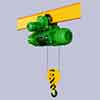 |
Electric hoists and electric hoists- wire rope single speed
wire rope electric hoist single speed 0.25 ton, 0.5 ton, 1 ton, 2 ton, 3 ton, 5 ton, 10 ton, 16 ton |
Please click for more information about Wire Rope Electric Hoist.
Double speed electric hoists
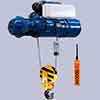 |
Dongqi Hoists can provide you double speed electric hoists with the lifting capacity of 0.25 ton to 32 ton. Wire rope electric hoist double speed 0.25 ton, 0.5 ton, 1 ton, 2 ton, 3 ton, 5 ton, 10 ton, 16 ton |
Please click for more information about Double Speed Electric Hoist.
European electric hoists
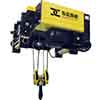 |
European electric hoist is a newly developed material handling equipment with advanced design technology according to the FEM standards, European hoist standards and other regulations. The lifting capacity of the European electric hoist is 1 to 80 tons and the working class is M5 and M6. |
Please click for more information about European Electric Hoist.
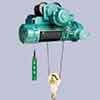 |
Dongqi Hoists can provide explosion proof hoists with the lifting capacity of 0.25 ton to 63 ton, and the lifting height of 1 m to 100m, with the working class of M3. What’s more, single speed explosion –proof hoists and double speed explosion-proof hoists. And, customized explosion proof hoists are available. |
Please click for more information about Explosion Proof Electric Hoist.
Metallurgical electric hoist
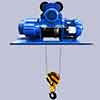 |
Metallurgical hoist offered by Dongqi has a lifting capacity of 1-10ton, lifting height 9-30m, the working class of M6. And customized metallurgy hoists for metallurgical industries are available.
|
Please click for more information about Metallurgy Electric Hoist.
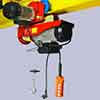 |
Mini electric hoist single hook 100 kg , 125 kg, 150 kg, 200 kg, 250 kg, 300 kg, 400 kg, 500 kg
Mini electric hoist with double hook 200 kg, 250 kg, 300 kg , 400 kg, 500 kg electric hoist The lifting speed of the mini or small hoists can be up to 10 m/min. |
Please click for more information about Mini Electric Hoist?.
Manual hoist and hand hoist
Manual hoist and hand hoist is a type of light hand operated hoisting equipment, which solves the material handling problems with man power, with the features of easy operation, cost-effective, wide application, etc. Dongqi Hoist offers types of manual hoists or hand operated hoists, such as, manual
Manual hoist – Chain type
| CB-1 manual hoist | CB-11 manual hoist, | VC-B manual hoist |
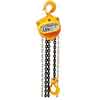 |
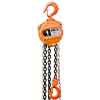 |
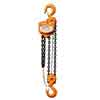 |
| CB-1 manual hoist series:
1 ton, 1.5 ton , 2 ton , 3 ton , 5 ton, 10 ton |
CB11 series manual hoists: 1 ton, 1.5 ton , 2 ton , 3 ton , 5 ton, 10 ton
|
VC-B manual hoist:
0.5 ton 1 ton ,1.5 ton, 2 ton, 3 ton, 5 ton, 10 ton, 20 ton, 30 ton, 50 ton , |
| CK type manual hoist | SK Series of manual hoist | HS-T type manual hoist |
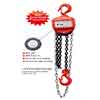 |
 |
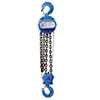 |
| CK type manual hoist 1 ton, 1.5 ton , 2 ton , 3 ton , 5 ton , 10 ton , 20 ton, | SK Series of manual hoist 0.5 ton, 1 ton , 1.5 ton , 2 ton, 3 ton , 5 ton , 8 ton , 10 ton, 16 ton , 20 ton | HS-T series of manual hoist 0.5 ton, 1 ton , 1.5 ton , 2 ton, 3 ton , 5 ton , 8 ton , 10 ton, 16 ton , 20 ton, |
| HS-C type series manual hoist | HS-Z type series manual hoist |
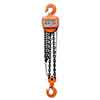 |
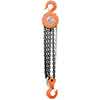 |
| HS C Series of manual hoist 0.5 ton, 1 ton , 1.5 ton , 2 ton, 3 ton , 5 ton , 20 ton,
|
HS-Z series Series of manual hoist0.25 ton,? 0.5 ton, 1 ton , 1.5 ton , 2 ton, 3 ton , 5 ton ,10 ton , 15 ton, 20 ton ,30 ton, |
Please click for more information about manual chain hoists.
| Manual hoist- explosion-proof type | |
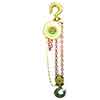 |
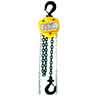 |
| Explosion proof hand hoist 0.5 ton, 1 ton,2 ton, 3 ton , 5 ton , 10 ton, 20 ton | VN explosion-proof manual hoist t 0.5 ton, 1 ton , 1.5 ton , 2 ton, 3 ton , 5 ton , 10 ton, 20 ton, etc |
Please click for more information about manual chain hoists.
Manual hoist and hand hoist – Lever type
| VC-A series lever hoist | VA series hand hoist | VD type lever hoist? |
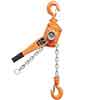 |
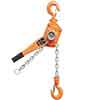 |
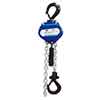 |
| VC-A series manual hoist 0.5 ton, 1 ton, 1.5 ton, 2 ton , 3 ton , 5 ton , 10 ton , 20 ton , 30 ton, 50 ton , | VL lever chain hoist 0.5 ton ,0.75 ton ,1 ton , 1.5 ton, 2 ton , 3 ton, 6 ton, | VD type lever 250 kg, 500 kg , 750 kg, 1500 kg , 2500 kg ,3000 kg, 5000 kg, 60000 kg , |
Wire rope lever hand hoist
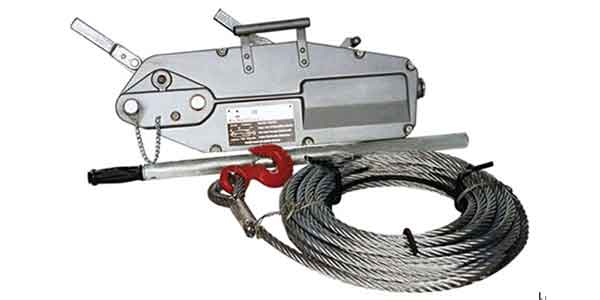
Please click for more information about ?leaver hand hoists.
